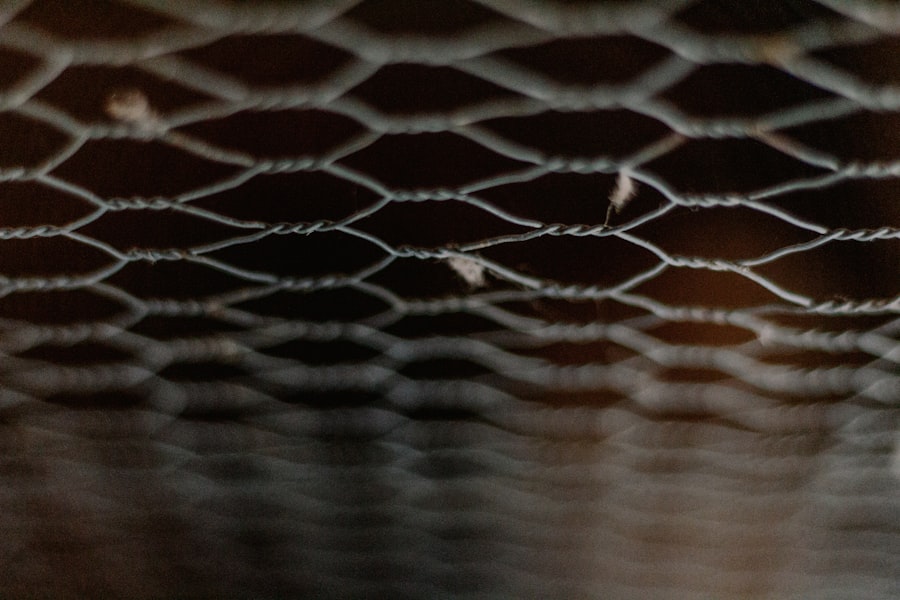Chickens are naturally curious and opportunistic creatures, often exploring their surroundings in search of food and shelter. They are also known to be easily startled and will quickly flee from perceived threats. Understanding these behaviors is crucial in developing effective strategies for keeping chickens out of unwanted areas.
By recognizing their natural tendencies, you can better anticipate their movements and implement appropriate measures to deter them from specific areas. Chickens are also social animals and tend to follow the lead of their flock. This means that if one chicken discovers a new food source or shelter, the rest of the flock is likely to follow.
By understanding this social dynamic, you can target specific individuals within the flock to discourage them from venturing into unwanted areas. Additionally, chickens have a strong sense of hierarchy within their flock, with dominant individuals often leading the group. By identifying and targeting these dominant individuals, you can disrupt the flock’s natural order and discourage them from entering restricted areas.
Table of Contents
- 1 Creating Physical Barriers
- 2 Using Natural Deterrents
- 3 Implementing Scare Tactics
- 4 Removing Attractive Food Sources
- 5 Seeking Professional Assistance
- 5.1 When DIY Methods Fail: Seeking Professional Help
If your efforts to keep chickens out of unwanted areas prove ineffective, it may be necessary to seek professional assistance. This can include consulting with a poultry expert or animal behaviorist who can provide insights and recommendations for deterring chickens.
- 5.2 Local Authorities and Animal Control Agencies
- 5.3 Access to Specialized Knowledge and Resources
- 5.1 When DIY Methods Fail: Seeking Professional Help
- 6 Establishing a Good Neighbor Policy
- 7 FAQs
- 7.1 What are some effective ways to keep chickens out of my yard?
- 7.2 Are there any plants that can help keep chickens out of my yard?
- 7.3 Can I use motion-activated sprinklers to keep chickens out of my yard?
- 7.4 Are there any legal restrictions on keeping chickens out of my yard?
- 7.5 What should I do if I find chickens in my yard?
Key Takeaways
- Chickens are naturally curious and will explore their surroundings, so understanding their behavior is key to deterring them from unwanted areas.
- Physical barriers such as fences and netting can effectively keep chickens out of specific areas and protect gardens and crops.
- Natural deterrents like predator urine, motion-activated sprinklers, and reflective objects can help keep chickens away from certain areas.
- Scare tactics such as noise-making devices and visual deterrents like scarecrows can startle chickens and discourage them from entering unwanted areas.
- Removing attractive food sources such as fallen fruits, seeds, and insects can help reduce the appeal of an area to chickens.
- Seeking professional assistance from pest control experts or animal control agencies can provide additional support in deterring chickens from unwanted areas.
- Establishing a good neighbor policy by communicating with chicken owners and working together to address any issues can help maintain a positive relationship within the community.
Creating Physical Barriers
Creating Physical Barriers
One effective way to keep chickens out of unwanted areas is by creating physical barriers to block their access. This can be achieved through the use of fencing, netting, or other structures that prevent chickens from entering specific areas.
Considering Chicken Behavior
When implementing physical barriers, it’s important to consider the size and agility of the chickens, as well as their ability to fly short distances. For example, if chickens are known to fly over fences, it may be necessary to install a roof or netting to prevent them from escaping.
Specialized Products for Chicken Deterrence
In addition to traditional fencing, there are also specialized products available that are designed specifically for deterring chickens. These include poultry fencing with smaller gaps to prevent chickens from squeezing through, as well as electric fencing that delivers a mild shock to deter them from attempting to breach the barrier.
Proper Installation and Maintenance
When creating physical barriers, it’s important to ensure that they are properly installed and maintained to effectively keep chickens out of unwanted areas.
Using Natural Deterrents

In addition to physical barriers, natural deterrents can also be effective in keeping chickens out of unwanted areas. One common natural deterrent is the use of predator scent, such as fox or coyote urine, which can create a sense of danger and discourage chickens from entering specific areas. Another natural deterrent is the use of plants with strong odors or tastes that chickens find unappealing, such as garlic, onions, or hot peppers.
By strategically planting these types of vegetation around the perimeter of the restricted area, you can create a natural barrier that deters chickens from entering. Another natural deterrent is the use of reflective surfaces, such as aluminum foil or shiny tape, which can create a visual disturbance and deter chickens from approaching. Additionally, the use of noise deterrents, such as wind chimes or motion-activated alarms, can startle chickens and discourage them from entering specific areas.
When using natural deterrents, it’s important to regularly assess their effectiveness and make adjustments as needed to ensure they continue to deter chickens from unwanted areas.
Implementing Scare Tactics
Scare tactics can be an effective way to keep chickens out of unwanted areas by creating a sense of danger or discomfort that discourages them from entering. One common scare tactic is the use of visual deterrents, such as scarecrows or predator decoys, which can create the illusion of a threat and deter chickens from approaching. Another visual scare tactic is the use of brightly colored objects or flags that move in the wind, creating a sense of movement and unpredictability that can startle chickens and discourage them from entering specific areas.
In addition to visual scare tactics, sound deterrents can also be effective in deterring chickens. This can include the use of loud noises, such as clapping or banging pots and pans, as well as the use of recorded predator calls or distress signals that create a sense of danger and encourage chickens to flee. When implementing scare tactics, it’s important to regularly rotate and vary the deterrents to prevent chickens from becoming accustomed to them and to ensure their continued effectiveness.
Removing Attractive Food Sources
Chickens are naturally drawn to areas with abundant food sources, making it important to remove any attractive food sources from unwanted areas. This can include securing garbage cans and compost bins to prevent access to food scraps, as well as removing fallen fruit or seeds that may attract chickens. Additionally, it’s important to regularly clean up spilled feed or grains to prevent chickens from being drawn to specific areas.
In addition to removing attractive food sources, it’s also important to secure any potential nesting sites that may attract chickens. This can include sealing off gaps or openings in buildings or structures where chickens may seek shelter, as well as removing any debris or clutter that could provide hiding spots for them. By removing attractive food sources and potential nesting sites, you can reduce the likelihood of chickens being drawn to unwanted areas.
Seeking Professional Assistance

When DIY Methods Fail: Seeking Professional Help
If your efforts to keep chickens out of unwanted areas prove ineffective, it may be necessary to seek professional assistance. This can include consulting with a poultry expert or animal behaviorist who can provide insights and recommendations for deterring chickens.
Expert Insights and Specialized Solutions
Additionally, professional pest control services may be able to offer specialized solutions for keeping chickens out of specific areas, such as installing exclusion barriers or implementing targeted deterrents.
In some cases, it may also be necessary to consult with local authorities or animal control agencies for assistance in addressing issues related to nuisance chickens.
Access to Specialized Knowledge and Resources
By seeking professional assistance, you can gain access to specialized knowledge and resources that can help effectively address the problem and prevent further issues with chickens entering unwanted areas.
Establishing a Good Neighbor Policy
Finally, establishing a good neighbor policy with other poultry owners in the area can help prevent issues with chickens entering unwanted areas. This can include communicating with neighboring poultry owners about shared concerns and working together to implement strategies for deterring chickens from entering specific areas. By collaborating with other poultry owners, you can gain support and cooperation in addressing issues related to nuisance chickens and work together to find effective solutions.
In addition to working with other poultry owners, it’s also important to communicate with neighbors who may be affected by issues related to nuisance chickens. By keeping open lines of communication and addressing any concerns they may have, you can build positive relationships and work together to find mutually beneficial solutions for deterring chickens from unwanted areas. In conclusion, keeping chickens out of unwanted areas requires a combination of understanding their behavior, implementing effective deterrents, and seeking professional assistance when necessary.
By recognizing their natural tendencies and social dynamics, you can develop targeted strategies for deterring chickens from specific areas. Whether through physical barriers, natural deterrents, scare tactics, or removing attractive food sources, there are various approaches that can be used to effectively keep chickens out of unwanted areas. Additionally, seeking professional assistance and establishing good neighbor policies can provide valuable support in addressing issues related to nuisance chickens and finding long-term solutions for preventing further problems.
If you’re looking for more information on keeping chickens, you might be interested in learning about how many chickens you need for a family of 4. Check out this article for some helpful tips on determining the right number of chickens for your household.
FAQs
What are some effective ways to keep chickens out of my yard?
Some effective ways to keep chickens out of your yard include installing a fence around your property, using chicken wire or netting to cover vulnerable areas, and using natural deterrents such as citrus peels or predator decoys.
Are there any plants that can help keep chickens out of my yard?
Yes, there are certain plants that chickens tend to avoid, such as marigolds, lavender, and mint. Planting these around your yard can help deter chickens from entering.
Can I use motion-activated sprinklers to keep chickens out of my yard?
Yes, motion-activated sprinklers can be an effective deterrent for keeping chickens out of your yard. The sudden burst of water can startle the chickens and discourage them from returning.
Are there any legal restrictions on keeping chickens out of my yard?
It’s important to check with your local ordinances and regulations regarding the keeping of chickens and the methods used to keep them out of your yard. Some areas may have specific rules about fencing and deterrents.
What should I do if I find chickens in my yard?
If you find chickens in your yard, it’s best to try to identify the owner and contact them to retrieve the chickens. If you are unable to locate the owner, you can contact animal control or a local animal shelter for assistance.

Meet Walter, the feathered-friend fanatic of Florida! Nestled in the sunshine state, Walter struts through life with his feathered companions, clucking his way to happiness. With a coop that’s fancier than a five-star hotel, he’s the Don Juan of the chicken world. When he’s not teaching his hens to do the cha-cha, you’ll find him in a heated debate with his prized rooster, Sir Clucks-a-Lot. Walter’s poultry passion is no yolk; he’s the sunny-side-up guy you never knew you needed in your flock of friends!
Meet Walter, the feathered-friend fanatic of Florida! Nestled in the sunshine state, Walter struts through life with his feathered companions, clucking his way to happiness. With a coop that’s fancier than a five-star hotel, he’s the Don Juan of the chicken world. When he’s not teaching his hens to do the cha-cha, you’ll find him in a heated debate with his prized rooster, Sir Clucks-a-Lot. Walter’s poultry passion is no yolk; he’s the sunny-side-up guy you never knew you needed in your flock of friends!







